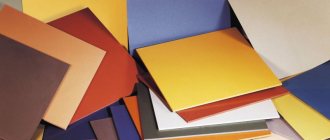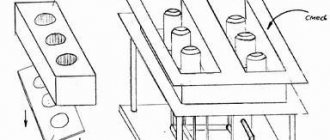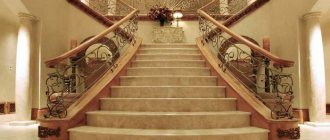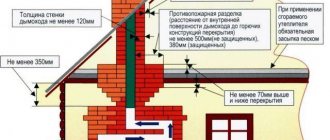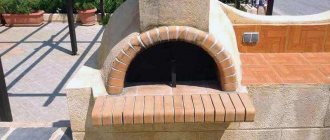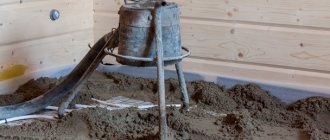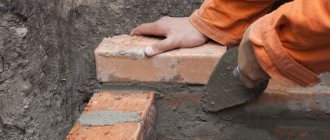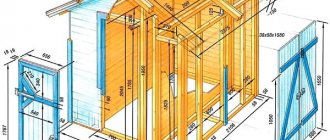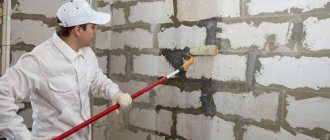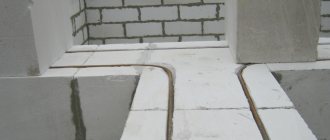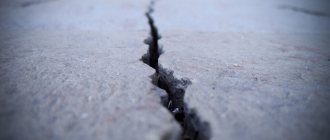07/02/2018 Category: Building materials
Each of us, when decorating our home, wants to find an option for finishing the premises so that the whole house acquires a unique individuality. The best way to create a special interior in a particular room is to use various decorative finishing materials, which include interior decoration.
Types of decorative bricks for interior decoration
Externally, decorative brick is almost no different from traditional brick, the only difference being that it is much lighter and thinner (its thickness varies from 1 to 2.5 cm). To make decorative finishing bricks, various components can be used, which, in fact, are an indicator of the division of such bricks into types. So, decorative brick can be:
- clinker
(ceramic). It is molded from clay, dried and fired. As a result of this treatment, clinker decorative brick acquires special strength and a smooth front surface. Of the special characteristics, it is worth noting the high thermal conductivity of this type of decorative brick; - from a cement-sand mixture
. The basis of such bricks is cement; sand is most often used as a filler (options are perlite or expanded clay). This brick is also characterized by high strength and good thermal insulation; - plaster
. This is a rather fragile product with low water resistance. It is usually used in places with low humidity levels and without significant mechanical loads.
Each type of finishing brick can be made with the addition of dyes for a more impressive appearance.
Wall decoration with decorative bricks
First of all, it should be said that professional designers recommend that when decorating apartments with decorative brick, you must combine it with other finishing materials, for example, wood or decorative plaster. Because if the walls are fully decorated with brick, the room will resemble a cold and uncomfortable basement. As a rule, decorative bricks for interior decoration are used in fragments to highlight certain interesting details of the interior design. What is meant? For example, it will look especially impressive in the interior with decorative brick trim around the entire perimeter.
The same technique is suitable for finishing door or window openings with decorative bricks.
In this regard, decorative brick is often used to decorate balconies, highlighting the window.
If your house has a fireplace, then decorative facing bricks, especially fire-resistant ceramic ones, are also ideal for lining its contours.
Decorative brick can be used with no less success for finishing more prosaic places, for example, a hallway. Here, decorative bricks are most often used to finish the contours of doors or they are used to line the lower part of the walls to protect them from dirt.
Many designers are happy to use decorative bricks to decorate kitchens, especially when decorating their interiors in the English or Provence style. White gypsum decorative bricks for interior decoration are ideal for this purpose. In this case, such bricks can be used to finish walls (or one wall) completely from floor to ceiling. /On a note. Since the kitchen is a room with a high level of humidity, in order to increase the service life of the decorative gypsum brick coating, it is recommended to treat it with a special compound that protects the masonry from excess moisture./
Completing the construction or renovation of a room, you are approaching the last stage of this grandiose action - interior design, where the key place is, of course, occupied by the walls. There can be many finishing options: from ordinary whitewashing or painting to natural wood paneling. However, there is a very original, affordable and effective way to give your nest a cozy and at the same time sophisticated look - use decorative bricks for interior decoration.
The material looks like brick used for masonry, only thinner and lighter. The most common sizes: width 29.0–17.0 cm, height 5.0–6.5 cm, thickness 1.0–2.5 cm. Available in front and corner. It should be clarified that decorative stone and brick for wall decoration are different types. Their main difference is that the stone has a relief front surface, various shapes and sizes.
Varieties and their characteristics
Depending on the raw materials used in production, decorative bricks are distinguished:
- Ceramic (clinker) is made from clay, which is molded, dried and fired. Thanks to this technology, decorative ceramic bricks have good strength, thermal conductivity, and a smooth surface.
- From a concrete mixture - the binding element is cement, and the fillers are sand or fine expanded clay and perlite. Such products are durable, environmentally friendly, and have good water-absorbing and heat-insulating qualities.
- Gypsum - unlike the two previous types, it is quite fragile, hygroscopic, and has low water resistance. For this reason, masonry of gypsum decorative bricks is done in places where the humidity is no more than 65% and the finishing does not experience large mechanical loads.
The listed elements are made with additives of dyes, and their front side can be covered with a protective layer that protects the products from moisture and temperature fluctuations.
Technical parameters of different types:
*Aeff – specific activity of radionuclides.
Usage
Decorative brick is intended for interior decoration of houses and buildings; when planning interior design, you should take into account some of the nuances of its use:
If there is a fireplace in the living room, it is better to use ceramic bricks with fire-resistant qualities to line its outline.
2. Decorative bricks for finishing a kitchen are usually used to decorate a work wall. In such a room, a contrasting design would look good: brick in dark colors and plasterboard structures in light shades. If you want to get an English-style kitchen, then the ideal option would be white gypsum brick, suitable for interior decoration. Thanks to its neutral color, this stone can be used to cover walls from ceiling to floor.
3. Wall finishing in the corridor is usually done in fragments in those places where there are doorways.
4. For the design of basement rooms, concrete bricks made in an antique style, with a rough front surface and rounded corners, are suitable.
The main thing to remember: decorative brick in the interior of your home should create coziness and comfort, and not the feeling of cold, gloomy walls.
How to make it yourself
Of the mentioned types of finishing bricks, only ceramic ones cannot be made at home, since they require the use of firing equipment. Products made from concrete mixture and gypsum are available for handicraft production. Making decorative facing bricks with your own hands requires the following tools and materials:
- vibrating table;
- plastic container for mixing ingredients;
- pallet;
- molds for filling;
- cement, gypsum, sand;
- citric acid;
- plasticizers;
- water-based dye.
The manufacturing process consists of several stages:
1. The mold for casting bricks is made of plastic, rubber or silicone and you can make it yourself. To do this you will need a suitable size stone. Then, the sample is placed in the prepared formwork made of wooden beams, having previously lubricated it and the container with grease, and filled with liquid silicone. The surface is smoothed with a trowel and left to harden for 2–3 weeks. After complete hardening, the formwork is disassembled, the sample is removed and the finished form is obtained.
2. The production of bricks from a concrete mixture involves pouring two layers of mortar and compacting it using a vibrating table (vibratory casting method):
- Preparation. For the 1st layer, take M400 cement and fine river sand up to 2 mm in a 3:1 ratio. Dye is diluted in warm water at the rate of 1-2% by weight of cement. A diluted pigment is added to the sand-cement mixture. For the 2nd layer, a plasticizer (about 2% of the total volume) and binding components are poured into the solution: perlite or fine expanded clay with a particle size modulus of up to 5 mm in a ratio of 1:3 to a mixture of sand and cement.
- The first layer (1 cm thick) is laid out in a mold previously greased with soapy water and compacted for 15–30 seconds on a vibrating table. You can use an old washing machine in this capacity by turning it on in the “Spin” mode. Vibration is necessary to remove air from the mixture.
- After compacting the first layer, a second layer with plasticizer is poured in, and the mold is again subjected to vibration for 20 seconds. Then the surface of the product is smoothed with a spatula.
- Primary drying is carried out for 12 hours. Upon completion, the brick is carefully removed from the mold and laid out on pallets for final drying, which lasts from 48 to 72 hours, depending on the air temperature.
3. Manufacturing from gypsum occurs in the same sequence, except that the gypsum solution dries quite quickly, so a mixture is prepared for one product:
- Gypsum G8–10 is mixed with water until creamy, adding 0.5 mg of citric acid per batch to increase the setting time. If coloring is necessary, a coloring pigment previously diluted in warm water is poured here.
- The mold is poured in one layer; before doing this, it must be coated with Vaseline or soap solution, this will then allow the dried stone to be removed from it easily and without damage.
- Drying of gypsum bricks takes 20–30 minutes.
- Additionally, you can paint the surface of the stone after it has dried. You need to remove the dust with a cloth and apply paint (recommended water-based) in the color you want.
DIY styling
Before you begin cladding, you need to prepare the tool. You will need:
- building level;
- rope;
- roulette;
- construction ruler;
- pencil;
- brush;
- Master OK;
- brush.
And also consumables:
- tile adhesive or liquid nails;
- drywall strips for seams;
- hydrophobic mixture for priming the brick surface;
- grout for seams.
Finishing stages:
1. The walls are leveled by plastering or covering with plasterboard, then primed.
2. You need to lay the brick along the marked line, starting from the bottom and corner of the wall. Using a spatula with a comb, the adhesive solution is applied to the wall. The stone is laid end-to-end or with a joint of 1.5–2 cm. To do this, strips of plasterboard are cut to the required width and placed between the rows of masonry.
3. After 48–72 hours, you can carefully remove the auxiliary strips and begin grouting. Any solution that gets on the brick must be removed with a wet sponge.
4. If desired, a hydrophobic composition can be applied to the surface of the laid stone, which will facilitate further maintenance and protect it from light mechanical damage.
Price
It is not difficult to buy decorative bricks, since they are represented quite widely on the finishing materials market. Its cost depends on the type, color, size and additional surface treatment. The average price of decorative bricks in Moscow is as follows:
| Name | Size, mm | Price, rub/m2 |
| Ceramic | 204x55x20 | 1 018–1 250 |
| From concrete mixture | 210x60x15 | 635–854 |
| Plaster | 235x70x15 | 805–1 000 |
| Articles |
The desire to have a modern and beautiful home forces the developer to use a variety of finishing materials. At the same time, the manufacturer is not asleep. As they say, demand creates supply. And today we will talk about bricks. Or rather, about its imitation. Thus, finishing brick for decorative purposes today is particularly popular among other finishing materials.
World-famous designers have developed an increased interest and love for indoor brickwork. They are the ones who dictate modern interior design trends. And the stone in this case looks very relevant. Brickwork on the outside is a unique tradition for Slavic people. But what to do if modern technologies and the building materials market allow you to save on building the frame of a house by using lighter cellular materials such as foam or gas blocks. In this case, you can make a brick wall of a house using facing stone in the form of tiles. Such decorative brick will successfully replace the full appearance of traditional masonry.
Decorative stone casting technology
Before you start casting decorative bricks with your own hands, you need to prepare everything you will need for the work. Required materials may include:
- polyurethane mold for making gypsum bricks;
- gypsum grade GF5 or other;
- cement and sand;
- container for mixing the solution;
- drill with attachment;
- dyes.
To add strength to products made from building gypsum or putty, it is best to purchase gypsum mounting adhesive (Knauf Perlfix or another).
The solution is prepared from 2 parts of alabaster or building gypsum (G4, G5) and 1 part of assembly adhesive. The components must be mixed well in dry form, and then pour the mixture into water, taken in a proportion of 1 liter per 700 g of gypsum components.
The composition of the molding gypsum solution is as follows:
- dry gypsum grade G10, GF10 - 6 parts;
- slaked lime - 1 part.
You need to take 1 liter of water for the solution for every 700 g of gypsum used to prepare the solution. For gypsum-based solutions, you only need to prepare a portion sufficient for 1 pour.
Concrete for making bricks is prepared from 3 parts cement and 1 part sand. To add greater strength, you can use polymer additives according to the manufacturer's instructions or PVA glue at the rate of 200 g per 10 liters of solution.
Place silicone molds (or any other) on a level surface. Pour in the prepared solution and give it time to harden. (Fig. 3) Remove the finished tile from the mold and apply acrylic dyes to it. To imitate brick, ocher or umber is suitable; natural stone can be painted, focusing on its natural color. To decorate a room or exterior of a house, lay imitation brick on a layer of tile adhesive. After installation, fill the joints with grout (colored or white), remove excess grout from the surface of the stone
Wall decoration with decorative stone or brick is very popular today. For the owner of an apartment in a brick house, doing this type of finishing with your own hands will not be difficult. The main thing to do is to leave part of the wall unfinished. The wall should remain unplastered, unpainted and unwallpapered. The brickwork of such a wall is carefully cleaned and coated with colorless varnish. If the construction of the house is new, the masonry is neat and the brick does not have large chips or cracks, then such a wall can be left untreated, thus creating a natural brickwork effect.
Decorative bricks can be used to cover the entire building or individual parts as stylish architectural highlights. This will ensure that your building is unique.
What should residents of non-brick houses who want to create...
Decorative bricks can be artificially stylized to look like real bricks by randomly breaking them before laying. This creates the effect of “torn” edges. The dimensions of the seams can be made arbitrarily at your own request.
The bricks are glued using a special acrylic putty for ceramic tiles. The glue is applied to the wall surface.
The duration of work on finishing a wall in this way can be reduced by using plasterboard, which, having been cut to specified dimensions, can be further processed, painted and varnished, because it is the same plaster only hardened.
- How to make decorative brick from gypsum?
- Decorative Portland cement brick
- How to make decorative brick using putty?
Making a decorative one will not be difficult. At a relatively low cost, you can make tiles that are not much different from those purchased. To make bricks, gypsum, putty, Portland cement, as well as homemade molds from paraffin, silicone, and sculptural plasticine are used.
Decorative brick: definition
Decorative bricks are industrially produced panels or tiles that imitate natural stone. In this case, by brick we mean both an imitation of brick blocks and an imitation of rocks, sandstone, shell rock, etc. That is, the decorative features of such products are not limited.
Depending on their purpose, decorative bricks are divided into facade tiles and tiles for interior decoration. The first option is products made of frost-resistant and impact-resistant material that can repel moisture. At the same time, the decorative stone has sufficient weight.
The second option for finishing material is a lighter tile made from gypsum. In this case, the cladding has less weight and is at the same time resistant to cold and moisture.
Preparatory work
First, the area of the proposed cladding is calculated (by multiplying the surface length by the height, the sum of the areas that will not be covered: windows, doors, decor is subtracted from the result). How many corner elements will be needed is calculated after measuring the height of the external or internal corners that will be lined. Afterwards, the area that will be covered by the corner elements is taken from the total area. It is imperative to throw on 5 to 8 percent of the bricks. This is due to the need to select and trim bricks, as well as possible damage.
The method of laying decorative bricks and the choice of grouting method directly affect the desired result. When facing a house with colored bricks, colored grouts and mortars for laying bricks are an indispensable element.
Adhesive decorative bricks should be carried out on a well-cleaned base that has the necessary strength and hardness. Another requirement for the base is that there is no risk of deformation or shrinkage. The base and back side of the bricks are treated with a deep penetration primer.
Before you start gluing decorative bricks, they are freed from packaging elements and laid out on 1-2 square meters of floor. This makes it possible to correctly select the sizes, colors, thickness and texture of various exhibition components and allows you to see the picture, which will then be laid out on the wall.
The horizontal surface is marked in advance. This is necessary in order to imagine how to place the brick and adjust the joint elements, which will reduce the amount of brick that requires filing.
When gluing decorative bricks, you can use jointing or do without it. The distance for the seam (usually from 1.2 to 1.5 cm) is calculated in accordance with the selected brick.
To give the styling a natural look, we recommend using corner elements. Their presence will visually add reliability and solidity to the masonry of decorative bricks, and will also simplify installation work.
If there are corner elements, the process of gluing bricks begins with them; they are laid alternating between long and short sides.
When installing decorative bricks without jointing, placing vertical seams one above the other is impossible. They are displaced by at least 5 cm.
Types of decorative bricks
All decorative brick tiles are divided not only by purpose, but also by the type of material from which they can be made. Thus, the building materials market offers the following types of decorative brick tiles.
Clinker brick
This finishing material is made in production from refractory clay. In this case, the brick blocks are fired at high temperatures. As a result of this “hardening”, the resulting tiles perfectly resist moisture, frost, mechanical stress, abrasion and fading in the sun. Almost an exact copy of a brick, only in a thinner design. As a rule, such facing stones have the width and height of a standard brick. Only the thickness of the tiles differs. It varies from 2 to 2.5 cm. Most often, this decorative stone in the form of a brick is used for cladding the facades of a house.
Important: if the decision to clad a house with clinker tiles and stones is made at the design stage, then the load-bearing capacity of the foundation must be calculated based on the increase in weight of the cladding. Because clinker facing bricks have a certain weight in their mass.
The advantages of clinker decorative stone are:
- Almost 100% natural appearance of the facade or base;
- Strength that increases over time during use;
- Easy installation;
- Durability of the material;
- Favorable cost in comparison with natural brickwork.
Ceramic decorative stone in the form of a brick
In this case, fusible clay is used to produce decorative stone. And to give the tiles structure and strength, quartz sand, carbonate additives, and dyes are used. Using the latter, it is possible to obtain bricks of various shades from white limestone to black burnt. Such a wide range of colors of the facing material allows you to realize a wide variety of design ideas from loft to ancient classics. During production, ceramic bricks are equipped with decorative chips, which enhances the aging effect of the cladding.
The advantages of ceramic decorative tiles-bricks are as follows:
- Strength and resistance to mechanical stress;
- Inert to moisture, sun, frost;
- Resistance to aggressive environments;
- The durability of the material and at the same time its comparative lightness;
- Absolutely environmentally friendly and aesthetically pleasing cladding.
Ceramic stone for decorative purposes can be used both outside the house and indoors. This type of decor is especially relevant in the decoration of a fireplace portal, a kitchen work apron, a panel in the living room, etc.
Gypsum tile-brick
Its purpose is exclusively interior decoration. These tiles are made from a mixture of gypsum and water. Special dyes are used as tinting agents. It is noteworthy that gypsum tiles can be made at home. It is only important to find molds for pouring the tiles. After the gypsum mixture in the molds has completely dried, the brick can be removed and mounted on the wall using special glue. And to give it a gloss, you can coat such tiles with a special protective varnish.
Important: such tiles for interior decoration (gypsum material) are afraid of water. Therefore, it can only be used in rooms with low humidity levels.
How to make decorative brick from gypsum?
You will need:
- gypsum;
- plastic reinforcing mesh;
- paraffin (candles);
- cardboard box;
- sculpture plasticine;
- silicone sealant.
Tools for making bricks: 1 – pestle (pusher), 2 – flooring, 3 – sand with a scoop, 4 – clay with a shovel, 5 – a craft, 6 – a staple or scraper.
You can make a brick with your own hands from plaster. To do this, you need to purchase sculptural plasticine and several tiles for a sample. The plasticine is rolled out to about 2 cm thick, after which they take a brick and make an impression. This creates a mold for low tide.
If you were unable to buy samples, then you can do things a little differently. After you have rolled out the plasticine, you need to take a chisel or screwdriver and cut out a brick shape. It should be taken into account that convex lines on the finished product will be concave, and vice versa.
You can make a casting mold using paraffin. The first step is to find a suitable size cardboard box. The paraffin is melted in a steam bath, then poured into the box.
After the mass hardens, use a chisel to cut out a brick shape. Instead of paraffin, you can use silicone sealant, but in this case you will need a ready-made tile for the sample.
The box is filled with sealant, then the brick is pressed into it, left until it hardens completely, and the tile is removed. The finished mold can be used for repeated casting.
There is another simple way to make a mold from silicone sealant.
Brick tiles are laid on a flat surface with the face up. Then a sealant is applied on top, the mass is compacted using a wet, thick brush, and then left to dry. It is advisable to make more of these molds - then the work of making bricks will go faster.
Gypsum is poured into water, diluted to the consistency of sour cream, and poured into molds pre-greased with vegetable oil.
After the mass is poured, it is necessary to shake the molds - this is done so that the gypsum is distributed evenly. Next, a plastic reinforcing mesh is laid on the surface (it needs to be recessed a little).
If the plaster dries with water, it means that the solution was made incorrectly - the next time you mix it, you need to reduce the amount of water.
In this way, you can get decorative bricks that are not inferior in appearance and quality to purchased bricks. All you have to do is paint the tiles with acrylic paints; this can be done before or after laying.
Return to contents
Dimensions of decorative bricks
For those who wish to use decorative brick tiles in cladding, it is worth understanding that cladding is available in various formats. So, if this is cladding for interior decoration, then most often the tiles have the dimensions of standard bricks. That is, the height of the tiles can vary from 6 to 15 cm, the length of the tiles varies in the range of 16-24 cm, and the thickness of the facing stones is invariably 2-2.5 cm.
If it is intended to use facade finishing, then to facilitate the work, the craftsman is offered decorative finishing bricks in the format of panels. Such fragments are easier and faster to install. The dimensions of such panels can vary between 320X340X25 mm; 380X200X25 mm, etc. (but strictly depending on the type of stone that imitates the panel).
Important: if decorative brick tiles imitate rocky stones, then here the dimensions may look different - 210x102x48mm. That is, the thickness of the stones will be greater, and their height will be less.
Preparation for laying decorative bricks
When applying the solution, it is convenient to use a spatula with a comb.
You need to figure out in advance how and where exactly it will be carried out. To do this, it is better to prepare a sketch and outline your own vision on this matter. Next, the sketch will be worked out taking into account the selected decorative brick, that is, its size and laying features. Any type of decorative brick can be laid end-to-end or with a seam formed. This must be taken into account when creating a sketch. Almost all types of artificial stone, as well as some types of natural stone, are characterized by constant geometry. In view of this, the dimensions of the areas that will be covered with tiles must be proportional in size. It is quite difficult to chip or cut a decorative brick without damaging its appearance. As a result, it all comes down to using solid material.
The installation pattern must be transferred to the wall. In places where you need to create an even edge of the finish, for example, near the floor or if the decorative finish only reaches a certain height, you need to create stops. It is best to use profile corners for this, which are fixed to the wall surface. In this case, the brickwork will have a beautiful appearance.
Brick-style tiles are one of the most popular types of artificial decorative stone. As a rule, it weighs less than natural stone and adheres perfectly to ordinary tile adhesive.
- Preparatory activities before laying decorative bricks
- Decorative brick laying technology
Decorative brick is a modern facing material that can be used both for finishing the external facades of buildings and for interior decoration. Its main function is to improve the aesthetic appearance of any surface. Knowing the installation technology and having prepared all the necessary materials and tools, you can do the finishing yourself.
The main advantages of decorative bricks include: increased moisture resistance, excellent thermal insulation and sound insulation qualities, and environmental friendliness.
Areas of application of decorative stone
Modern designers use decorative coating in the form of stone-brick in a wide variety of occasions and interiors. So, the most popular points for cladding in the house are:
- Entrance hall and corridor;
- Kitchen work area;
- Decorative finishing of a balcony or loggia inside and out;
- Fireplace portal and the area around it;
- Partial areas of rooms (corners, wall panels, panels);
- Cladding the basement, corners of the house or the entire facade.
Features of using brick finishing
If you decide to use finishing bricks, then when working with such decorative stone you need to remember some nuances:
- Thus, facade finishing with ceramic or clinker bricks requires strengthening the foundation, since pressure will be exerted on the walls.
- It is important to use panels in the form of decorative bricks in ventilated façade systems. And when laying bricks on the wall, it is better to provide small ventilation gaps.
- When laying finishes on walls, ensure that the surfaces are perfectly flat. Otherwise, the decorative stone will fall off over time.
- Gypsum tile-bricks are glued with gypsum-based glue, and ceramic and clinker bricks are mounted with concrete-based glue.
- Before installing the stone, it is better to prime the walls. This will strengthen the adhesion between the cladding and the wall.
- When finishing the interior with stone, you can additionally highlight the panel or tiled area. This will add texture to the finish.
Important: any type of decorative brick looks good in combination with wood or simple plaster. Therefore, feel free to create your own interior or exterior design of your home.
Decorative brick for interior decoration is not some new invention of designers; it is often used for cladding fireplaces, kitchens, and hallways. They also decorate the walls of bedrooms and living rooms. What is the reason for such popularity? There are several of them:
- aesthetic qualities of the material, allowing you to create an original design in a room of any style;
- operational characteristics ensuring durability, wear resistance, fire safety;
- decorative elements are easy to use and can be placed on any base.
Ordinary brick is quite heavy, so it creates additional load on the floor. In addition, the masonry will “steal” part of the area. Decorative products look practically no different from ordinary ones, but are much thinner. They are made from high-quality materials (most often gypsum or clay), giving the surface the desired texture.
Manufacturers offer bricks in a wide range of shapes, colors, and textures. This can be traditional white or red, as well as elements of any shade. You can use them to lay out patterns and mosaics. Using various methods of masonry and jointing, you can be guaranteed to create an exclusive interior. Cement adhesive is used to secure the cladding. If you have some experience, this process is quite simple and can be done independently.
Wall decoration with gypsum decorative bricks
One of the most popular interior finishes today is surface cladding with the effect of imitation building bricks. Decorative stone comes in different types and differs in texture and color palette. Types of decorative bricks:
- Glossy tiles;
- Matte products;
- Relief brick;
- Convex stone;
- Concave product.
Laying gypsum bricks on the wall allows you to create an individual interior design for an apartment or house. In addition, gypsum boards are quite strong and moisture-resistant, thanks to these qualities the cladding of the room becomes practical and durable.
Laying gypsum bricks on the wall allows you to create an individual interior design for an apartment or house.
Advantages and disadvantages of gypsum stone
Gypsum products have a number of advantages, but they also have disadvantages. The advantages of the material are:
- Environmental friendliness;
- External attractiveness;
- Ease of processing;
- Thermal insulation;
- Fire safety;
- Easy installation;
- Acceptable price;
- Light weight.
Despite many advantages, this material also has disadvantages, the most important of which is the risk of mechanical damage. However, with certain skills they can be eliminated through restoration.
Gypsum products have a number of advantages.
Material for production
The most popular types of bricks are: clinker, gypsum, cement. The main component of clinker is clay. This type is distinguished by its high cost due to the complex manufacturing process. The mixture is fired, giving the material high density and strength. The edges are smooth, and the color is uneven. It is often used for rooms with temperature changes. These can be balconies, verandas, fireplaces.
Another type is brick for finishing made of gypsum or its mixture with cement. It is made by hand molding. To do this, the solution is poured into molds and left to gain strength. Then the finished element is removed and subjected to final drying. If the mixture consists mainly of gypsum, then the elements become white. They are quite fragile and cannot tolerate high humidity. They are best used in places that are not subject to mechanical stress and do not require frequent washing.
Cement facing bricks are durable and resistant to moisture. They can be used to cover the walls inside the building and the façade. It is also suitable for damp areas.
A rather new type is porcelain stoneware brick. It is characterized by increased wear resistance, does not accumulate dust on the surface, and is easy to clean. Its disadvantage is its high cost. In addition, due to the granite chips it contains, the material has a large weight, which complicates installation. It is often used in rooms with a difficult microclimate (baths, saunas).
Another interesting option is acrylic brick. It turns out to be light but durable. Will last a long time. Thanks to the rich range of colors and the ability to give any shape, acrylic products are an indispensable element of cladding.
Regardless of the source material, decorative brick for interior decoration has the following advantages:
- durability - will last for decades without losing its color and maintaining its attractiveness;
- wear resistance - even increased mechanical impact will not cause damage to it;
- thermal insulation properties - will reduce heat loss from the premises, the walls are always pleasant to the touch;
- waterproofness - the application of hydrophobic compounds will help improve it;
- environmental safety - natural ingredients are used in production.
Decorative bricks are made both as individual elements and in the form of panels. The surface of the panel imitates masonry made of several stones; work seams are immediately made on it. Installation of panels is much easier and faster.
Decorative masonry: features of modern materials
For decorative stone, it is important to choose good lighting.
Before decorative masonry begins directly, it is necessary to consider some important features of this type of finishing and describe possible options for using and laying decorative stone and brick. If you decide to diversify your interior by finishing some elements with decorative stone or decorative masonry will be used to decorate an entire wall, you need to take into account that much more light will be needed to illuminate such a room. In dim or dim lighting, decorative brickwork will seem oppressive and too gloomy. you can make the task a little easier by alternating flat areas with light plaster, wallpaper or paint and areas finished with decorative brick.
Decorative brick and stone are made from two main materials: cement mortar and gypsum.
For rooms with low humidity, finishing with lighter gypsum stone is suitable.
Artificial gypsum stones are used in rooms with low humidity (living rooms, bedrooms), because... gypsum is characterized by increased hygroscopicity (easily absorbs moisture). But cement-based decorative bricks can withstand high humidity, which allows this material to be used in toilets, bathrooms and kitchens. Walls finished with decorative bricks look expressive and original. The ease of installation of this material will allow you to decorate the walls of your house or apartment yourself, without resorting to the services of third-party specialists.
The modern market offers a huge variety of colors and types of decorative stone, so it is perfect for any interior design of a house or apartment. However, remember that bricklaying is not suitable for decorating very narrow rooms. Such a room will seem even narrower even with good and proper lighting.
Return to contents
What to give preference to?
The dimensions of the bricks differ depending on the manufacturer and the style of the element. Their number is calculated in the same way as tiles. Porcelain stoneware and ceramic products are the heaviest, so the most mortar will be required. But they do not need additional protection. Acrylic bricks immediately have a coating that protects them from external factors. They are lightweight, so installation will be quick and inexpensive. They have one drawback - the high price. Gypsum bricks will need to be coated with moisture-protective agents, but less mortar will be required for the masonry. by all indicators the most affordable option.
To make the finish aesthetically attractive, the masonry must be done carefully. Not many masters master it perfectly, so it is expensive. But the result will delight you with a stylish and original look for many years.
Laying order
Facing brick is a universal material that is suitable for laying on concrete, plasterboard, and wood. Preparation of the base consists of cleaning it from old cladding, leveling, and priming. Reinforcing mesh will help improve adhesion to the base.
Before laying, it is recommended to lay out the bricks on the floor to evaluate their color, matching shade, texture, and size. If elements from different packages are slightly different, you can alternate them. This will give the cladding heterogeneity and make it more natural. For corners, special corner elements are used.
First, markings are made on the wall, determining the position of the bottom row. It is also recommended to treat the back of the decorative brick with a primer. For gluing, use a thick adhesive composition so that it does not slide off the wall.
First, apply the adhesive mixture with a spatula to a small area of the wall, rubbing it in for better contact. Then the glue is spread over the back of the brick using a notched trowel. The prepared element is pressed to the surface, turning it slightly. The squeezed out excess solution is immediately removed. To get beautiful seams, spacers made of pieces of drywall or plywood are inserted between the rows. The finishing is completed by grouting the joints using a special composition or the mortar used for laying.
Preparatory activities before laying decorative bricks
Before carrying out the main work, before covering the surface, it is necessary to carry out some measures, which include:
- in preparing the installation site;
- in the selection of materials and tools.
The facing surface must be smooth, dry and clean. In case of large differences, leveling is done using putty.
You should select materials and tools in advance. For basic work you will need:
Scheme of cladding a wooden wall: A - wood, B - waterproofing, C - reinforcing mesh, D - cement glue, E - decorative brick.
- decorative brick;
- adhesive composition (different for interior or exterior work);
- measuring instruments;
- glue container;
- mixer;
- a circular saw;
- twine;
- brush;
- putty knife;
- hammer;
- nails;
- wooden slats;
- grout mixture;
- plastic crosses;
- rubber mallet.
After preparing the material, tools and surface, you can select the elements to be installed in accordance with the specified volumes. If necessary, they are trimmed using a circular saw. By alternating small and large elements you can get an interesting pattern. After this, you should proceed directly to the cladding process.
Return to contents
Interior solutions
Brick is used to decorate entire walls or individual sections. It often frames the head of the bed, niches, fireplaces, mirrors, and helps to zone the space. White brick is recommended for the corridor or hallway. Due to lack of lighting, dark colors will make the room gloomy and uncomfortable. If you still choose a dark background, then light grout looks good on it.
Brickwork has become an integral attribute of the loft style. It is used to decorate the living room, finishing the entire wall. For greater realism, the masonry does not have to be perfect; chips and abrasions will give it a cozy, lived-in look.
Country style also goes well with brick. Using it to decorate walls, fireplaces, stoves, openings - all this helps create the right atmosphere. In this case, you can use both white brick and red shades.
Even in the high-tech style, brick looks modern and fashionable. Preference is given to smooth products with a glossy surface. Shades of white look appropriate. The grout is selected to match the main cladding as closely as possible to create a monolithic coating. Aged brick looks extravagant. Its rough texture emphasizes the elegance of high-tech style elements.
When decorating a kitchen in the English style, light brick is used. If the kitchen is large, with good lighting, then decorate the entire wall. In a small room, only the work area is often covered. Here it is appropriate to use clinker bricks, which are easy to clean and do not deform.
Today, decorative bricks for decoration inside a room are actively used by people who wish to transform a room in a house, office or city apartment. The reason for such success of this building material is that it is absolutely natural, has natural beauty and is environmentally friendly. Using this material, you can give life to even the most extraordinary and intricate ideas.
Today there is a wide range of products available for interior cladding. Each type of material has its own characteristics and scope of application.
Plaster
At its cost, this material can be called the most affordable. The process of its production is very simple, and gypsum is used as the material. The final product is coated with a paint and varnish composition, making it no different from its counterparts.
The photo shows gypsum bricks for interior decoration:
Gypsum brick is practical, durable and resistant to temperature changes. But you should not use gypsum in rooms where there is high humidity - kitchen, bathroom. It can be used when decorating a living room or corridor. Its cost is 880 rubles per m2.
Porcelain tiles
In the photo - porcelain stoneware
This stone is distinguished by its high strength characteristics. The process of obtaining it occurs using a special technology. Crushed granite is placed into the clay mixture, then it is pressed.
Made from porcelain stoneware, it is distinguished by its strength and durability. It can be used when decorating an arch in the corridor, for the kitchen and bathroom. The cost of stone in Leroy Merlin is 2200-2800 rubles per m2.
Ceramics
Ceramic decorative bricks for finishing interior space are no different from finishing bricks. The only thing that distinguishes them is thickness. The material is produced by high-temperature firing, to which the clay mixture is subjected.
Various binding components are placed in it. Used for finishing bathrooms, kitchens and toilets. Its cost is 18 rubles per piece.
Under the stone
This material allows you to give the room a noble aristocratic look. It is used when cladding a hallway or living room.
Finishing with decorative bricks to look like stone is no different from facing with real stone, but it costs less, and the installation process is simpler. The cost is 1800 rubles per m2.
Why do you need decorative brick and its advantages?
Among all the decorative materials, it has a truly original design. On sale you can find many models, each of which will have its own characteristics, which allows you to expand the possibilities when creating an interesting and unique interior. A wide selection allows you to choose a product that will suit your interior.
Decorative brick finish can withstand all the difficulties of use. It does not fade, does not deteriorate from mechanical damage and does not leave indelible marks on it, like on wallpaper. If dirt appears, it can be easily removed with detergents, wet cleaning and other available means. The material is not too sensitive to all this and does not deteriorate from moisture or any household chemicals.
The surface does not fade and for many years everything remains in the same form as it was after installation. Most models have dark colors, but it is possible to choose lighter colors. Models with white brick can be used in a wide variety of design options.
This is an inexpensive and convenient design solution. It is suitable for various bars, cafes and restaurants, as well as for private houses and apartments. The practical properties of the material make it an ideal choice for areas with high foot traffic. High installation speed allows you to quickly cover large areas, which is convenient when quick repairs are needed. The peculiarities of installation are that laying decorative bricks is extremely simple. It is much easier than working with real bricks and does not require high precision.
